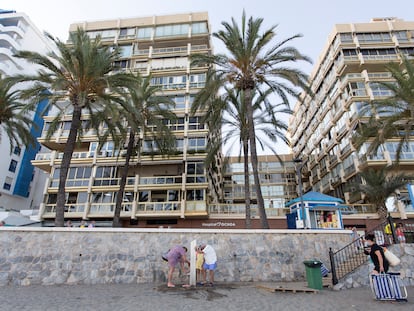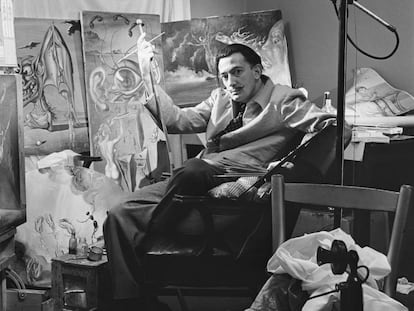John Lennon, Brigitte Bardot and Gerald Brenan: the crazy years of Spain’s Costa del Sol
A new book explores the stories of the actors, writers and criminals who flocked to Málaga’s coast for its beaches, parties and discretion
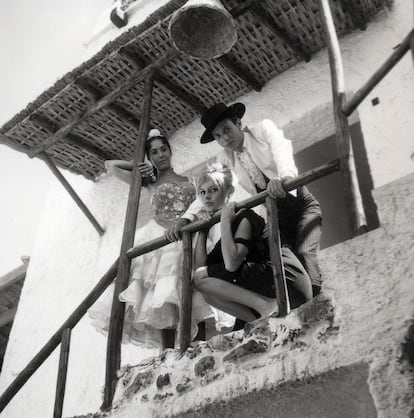
There was a time in Spain’s Costa del Sol when you could see French actress Brigitte Bardot having a drink in a restaurant with a donkey by her side. You might spot John Lennon and The Beatles manager Brian Epstein at a café, or find notorious art forger Elmyr de Hory heading to the beach with a hamper. You could see Scottish actor Sean Connery in a public cinema watching one of his James Bond movies, French director Jean Cocteau making ceramics, or English crime bosses the Kray twins pulling out a gun at the slightest provocation.
With the southern Spanish city of Marbella starting to grow and the literary circle of British writer and hispanist Gerald Brenan and American poet Gamel Woolsey bringing life to the Malageñan town of Churriana, the municipality of Torremolinos became the epicenter of the golden years of the Costa del Sol – all at a time when the area was just a handful of villages with white-painted houses. Visitors from across the world traveled there to enjoy themselves away from prying eyes. They hung out at the beach, but also in watering holes such as Pedro’s Bar, The Blue Note and Betty’s Bar. The British owner of the latter, Betty Pope, remembers entertaining Frank Sinatra while his wife Ava Gardner was seen with bullfighter Luis Miguel Dominguín.
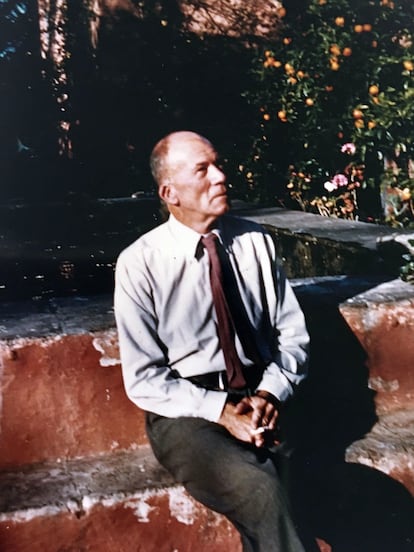
The list of celebrities who visited the Costa del Sol in the second half of the last century seems endless, especially in the 1970s and 1980s. As many as 150 famous figures are named in the new book Excéntricos en la Costa de Sol (or, Eccentrics on the Costa del Sol), written by José Luis Cabrera and Carlos G. Pranger, with illustrations by Cintia Gutiérrez. The work, recently published in Spanish by La Térmica Cultural Center publishing house in Málaga, brings together real-life stories that are stranger than fiction. It is filled with anecdotes, surprising friendships and prints that offer a glimpse into this corner of freedom in Spain while the country was in the grip of the Franco dictatorship.
Torremolinos was the stage of an epoch that was a “vaudeville, a party that seemed to have no end and no beginning,” the authors write in the book, which took two years to complete.
The volume covers the stories of the famous visitors, but also includes historical details, such as the sale of contraceptives in a pharmacy in Torremolinos, where the streets smelled of hashish from the hippies and beatniks, who would mix with local women in mourning and the families of fishermen. At the time, however, alcohol – not hashish – was the drug of choice. Novelist and playwright William P. McGivern wrote that in this paradise “servants and liquor” were amazingly cheap.
Several writers from the influential group of poets known as the Generation of ‘27, as well as Spanish artist Salvador Dalí and muse Gala Éluard, who was reportedly the first woman to sunbathe topless in the Costa del Sol, also flocked to this corner of Spain before the Spanish Civil War. They stayed in the Santa Clara Hotel, which was bought by wealthy British heir George Langworthy.
But Torremolinos really took off in 1958, following the end of the Spanish protectorate of Morocco, when the inhabitants of the former Tangier International Zone decided to cross to the other side of the Mediterranean. The 1960 earthquake in the Moroccan city of Agadir pushed many others to do the same. Through word of mouth, Torremolinos ended up bringing together the paths of an eccentric group of people at a moment when the idea of rampant development along the Malagueñan coast was nothing but a bad dream.
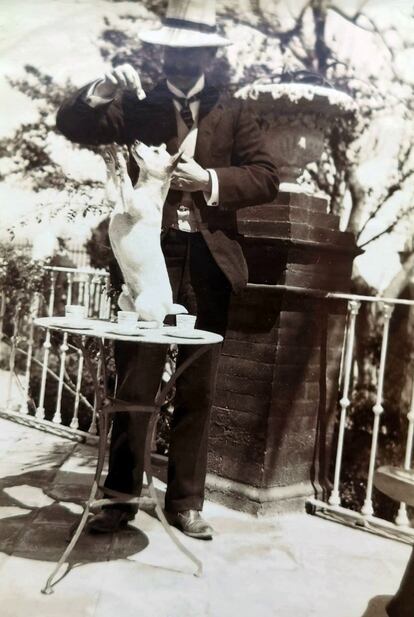
“We used to sit at a café in Torremolinos looking at all the guys and I would ask him, ‘Do you like this one? What about that one?’,” John Lennon recounts of his experience visiting the town in 1963 with Brian Epstein. Epstein would return two years later to visit the famous flamenco tavern La Bodega Andaluz, where he saw legendary dancer Carrete perform. At the beginning of the 1970s, the first English pub opened up in Málaga: Shelagh’s Bar. Another popular joint was the Fat Black Pussy Cat, owned by singer John Mitchell, who was once seen entering a bank on the back of his horse, and Pedro’s Bar, where Henri Charrière, the author of Papillon, used to have an aperitif alongside the pet of the bar: a parrot named Captain Morgan. War veteran Dave Black also used to go to the Three Barrels Bar with a parrot on his shoulder. He would order a beer for himself and a rum and coke for the bird.
Gerald Brenan had already been in Churriana for more than two decades, after buying a house in the area from the Heredia family in 1943. Today this district in Málaga is a residential area next to the airport, but back then, it was a lush meadow that was one of the most important literary hubs in the world. Brenan and his wife, Gamel Woolsey, invited several generations of writers to their home. These guests would also visit La Cónsula, a house bought by US couple Bill and Annie Davies. Literary critic Cyril Connolly, polymath Bertrand Russell, actor Laurence Olivier, director Orson Welles, actress Vivien Leigh, painter Lars Pranger and poet Lynda Nicholson were just some of the notable figures to pass through its doors. Writer Ernest Hemingway even celebrated his 60th birthday in the house. But Brenan was not overly impressed by Hemingway, describing him in his memoirs as “a kind of sea captain with a white beard who only talks about bullfighting.”
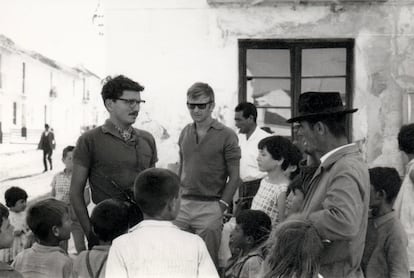
In his final years in Málaga, Brenan opened his home to youngsters from the beatnik generation who arrived in droves to Torremolinos. Those were also the days of gangsters Reginald and Ronald Kray, popularly known as the Kray Twins, who were celebrities of the London crime underworld in the 1970s. This was when hustler Donald Munson would come to town in his Ford Taurus with a Greek license plate and a bullet hole in the windshield; when New York photographer and filmmaker Ira Cohen would visit, and sex symbol Bob Reed would give swimming lessons. Those were the days when Torremolinos received visits from a diverse range of personalities: from LSD guru Timothy Leary and writer Thomas Bernhard to glam pioneer Arthur Brown and Hollywood stars Judy Garland and Kirk Douglas.
It was also a golden age for Marbella. This was the era that gave birth to the Marbella Club Hotel – which continues to drive tourism in the city to this day – and the residential estate La Virginia, which remains an oasis among the concrete jungle. La Virginia was designed by architects Donald Gray and Juan Manuel Figueras and was home to a colorful array of residents including the dukes of Windsor, Formula 1 driver James Hunt and Vic Grubby, who filmed advertisements in the mansions and, when finished with work, took advantage of the space to record porn movies. Spanish writer Ana de Pombo stirred the city’s social life at her tea salon La Maroma, which featured panels made by Jean Cocteau. Welsh actor Stanley Baker even bought a house in Marbella after appearing in the film The Guns of Navarone. Meanwhile, Northern Irish soccer player George Best was partying and drinking carajillo – a type of alcoholic coffee – with retired Spaniards to the dismay of his team Manchester United. No eccentric personality escaped the influence of the Costa del Sol.
English version by Melissa Kitson.
Tu suscripción se está usando en otro dispositivo
¿Quieres añadir otro usuario a tu suscripción?
Si continúas leyendo en este dispositivo, no se podrá leer en el otro.
FlechaTu suscripción se está usando en otro dispositivo y solo puedes acceder a EL PAÍS desde un dispositivo a la vez.
Si quieres compartir tu cuenta, cambia tu suscripción a la modalidad Premium, así podrás añadir otro usuario. Cada uno accederá con su propia cuenta de email, lo que os permitirá personalizar vuestra experiencia en EL PAÍS.
¿Tienes una suscripción de empresa? Accede aquí para contratar más cuentas.
En el caso de no saber quién está usando tu cuenta, te recomendamos cambiar tu contraseña aquí.
Si decides continuar compartiendo tu cuenta, este mensaje se mostrará en tu dispositivo y en el de la otra persona que está usando tu cuenta de forma indefinida, afectando a tu experiencia de lectura. Puedes consultar aquí los términos y condiciones de la suscripción digital.
More information
Últimas noticias
Chris Martin, Taylor Swift, Elijah Wood and other famous wedding ‘crashers’
‘How does it feel to be a failure?’: Elizabeth Berkley’s journey from ‘Showgirls’ ridicule to vindication
The story of the Málaga virus: The code that haunted Google’s cybersecurity center director for 30 years
The impact of Ecuador’s mega-prison: A polluted river, cleared forests and military checkpoints
Most viewed
- The low-cost creative revolution: How technology is making art accessible to everyone
- Christian Louboutin: ‘Young people don’t want to be like their parents. And if their parents wear sneakers, they’re going to look for something else’
- All the effects of gentrification in one corner of Mexico’s Colonia Roma
- Liset Menéndez de la Prida, neuroscientist: ‘It’s not normal to constantly seek pleasure; it’s important to be bored, to be calm’
- December Social Security and SSI payments: Dates, double checks and the 2026 COLA increase

